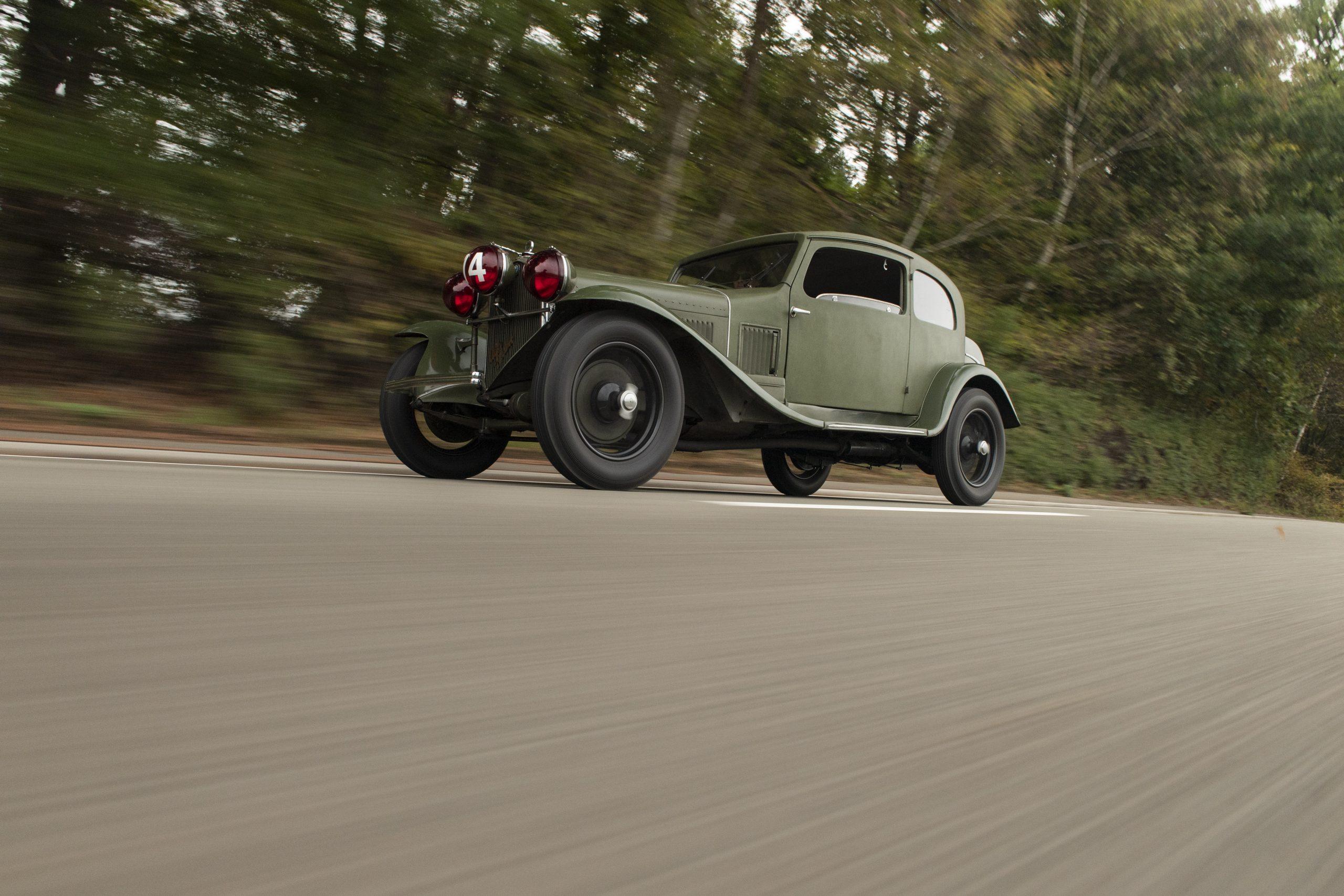1932 Alfa Romeo 6C 1750 GS Zagato

The descriptions of the Classic Cars in the Directory were partly generated or supplemented with the help of artificial intelligence (AI). The content may occasionally not always be entirely accurate or factually correct despite careful checking.
The Alfa Romeo 6C 1750 GS Zagato 1932 is a classic sports car that exudes style, sophistication, and power. This two-seater convertible is a masterpiece of engineering and design, featuring a host of technical features that make it one of the most advanced cars of its era. From its sleek bodywork to its high-performance engine, the Alfa Romeo 6C 1750 GS Zagato 1932 is a car that impresses on every level.
At the heart of the Alfa Romeo 6C 1750 GS Zagato 1932 is a 1752 cc inline-six engine that delivers an impressive 85 horsepower. This engine is a marvel of engineering, featuring a dual overhead camshaft design and four-speed manual transmission. The engine is capable of propelling the car from 0 to 100 km/h in just over 10 seconds, while also delivering exceptional handling and control.
The Alfa Romeo 6C 1750 GS Zagato 1932 is also notable for its exceptional styling. The car's bodywork was designed by renowned Italian designer Ugo Zagato, who was known for his elegant and aerodynamic designs. The car's low-slung chassis, long hood, and sweeping fenders were all designed with performance in mind. The car's lightweight aluminum bodywork is also notable, as it helps to reduce the car's overall weight and improve its handling.
Inside the Alfa Romeo 6C 1750 GS Zagato 1932, the focus is on performance and driver engagement. The car features a minimalist interior, with a simple instrument panel and a three-spoke steering wheel. The car's bucket seats are also designed for maximum support and comfort, ensuring that the driver and passenger stay securely in place during spirited driving.
Other notable technical features of the Alfa Romeo 6C 1750 GS Zagato 1932 include its hydraulic drum brakes, which provide exceptional stopping power, and its independent front suspension, which improves the car's handling and stability. The car's four-speed manual transmission is also noteworthy, as it allows the driver to fully engage with the car's performance capabilities.
In summary, the Alfa Romeo 6C 1750 GS Zagato 1932 is a classic sports car that is sure to impress anyone with an appreciation for technical excellence and outstanding design. From its high-performance engine to its lightweight bodywork, this car is a masterpiece of engineering that continues to inspire awe and admiration even decades after its original release.
Milestones
- Introduced in 1930 as a successor to the 6C 1500 - Featured a 1752 cc inline-six engine, producing 85 hp - First model to feature the "Gran Sport" (GS) moniker, indicating its performance-oriented engineering - Designed by Zagato, a renowned coachbuilder from Milan - Bodywork featured lightweight construction and aerodynamic lines, contributing to the car's racing success - Won numerous races and championships, including the Mille Miglia and the 24 Hours of Le Mans - Considered a pinnacle of pre-war Italian automotive design and performance - Only 118 examples were produced, making it a rare and valuable collector's item today.Technical
• Engine: inline 6-cylinder, 1752 cc displacement, DOHC, 6 Weber carburetors • Power output: 85 hp at 4500 rpm • Top speed: 140 km/h • Transmission: 4-speed manual • Suspension: front and rear live axle with semi-elliptical leaf springs and hydraulic shock absorbers • Brakes: hydraulic drums on all four wheels • Body: two-seater roadster with aluminum coachwork by Zagato • Wheelbase: 2,750 mm • Weight: 900 kg • Production: only 82 units produced • Racing success: won the 1930 Mille Miglia, the 1931 24 Hours of Spa-Francorchamps, and the 1932 Targa Florio.



